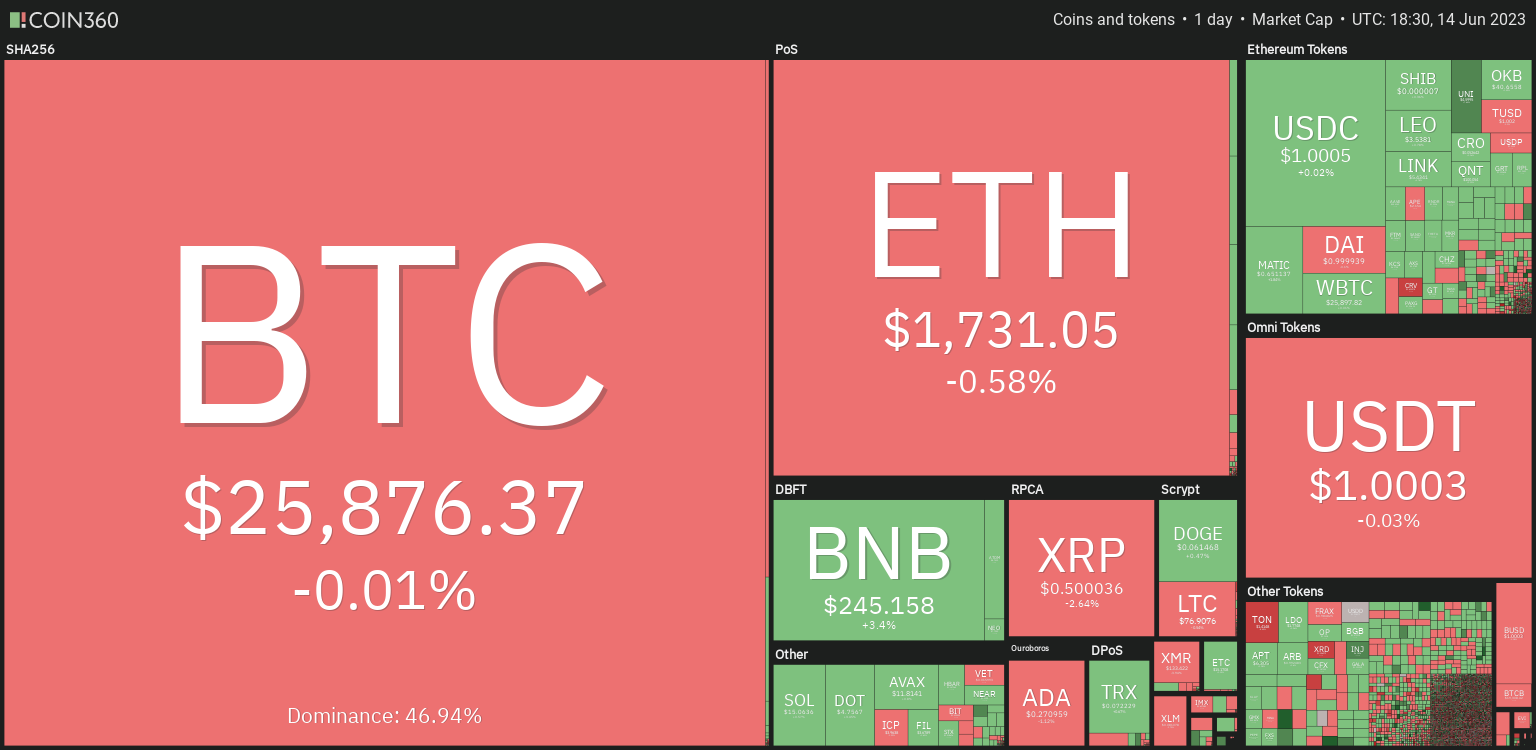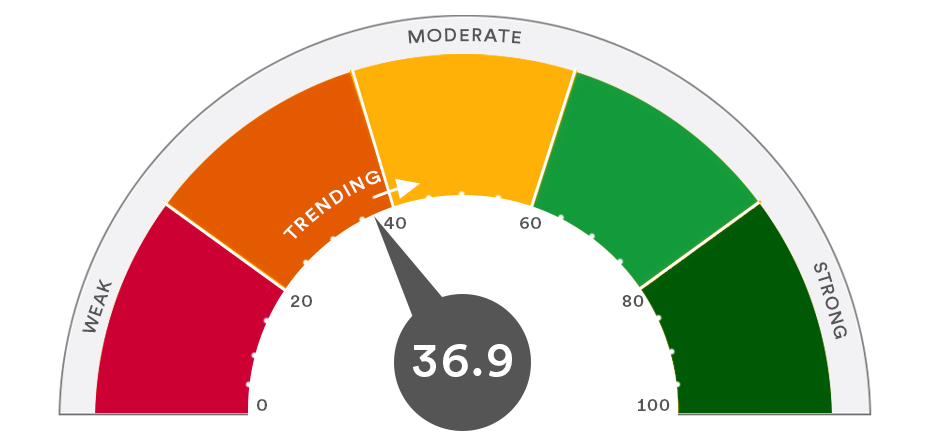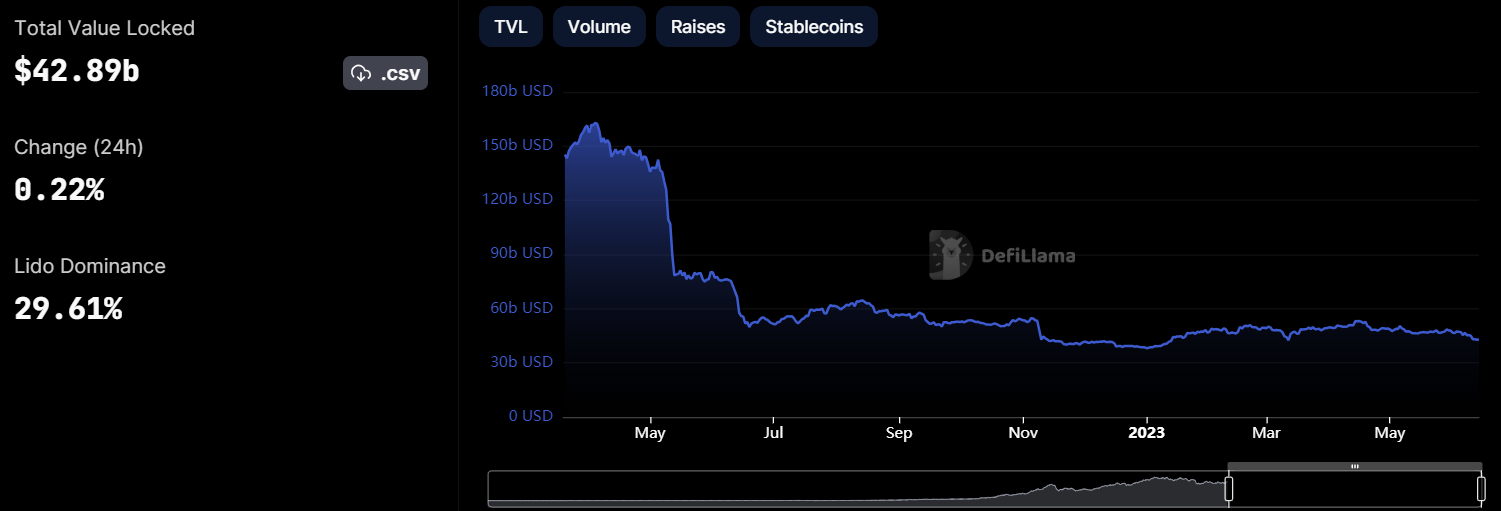
Here’s what happened in crypto today

Crypto prices have yet to react to the Fed decision to temporarily halt rate hikes; meanwhile, the S&P 500 steamrolled to a new 13-month high.
The crypto market remains volatile after the June 14 Federal Open Market Committee (FOMC) announcement and presser with Federal Reserve Chairman Jerome Powell revealed that the central bank would pause rate hikes for June.
While this move aligned with investors’ expectations, the crypto market has yet to show any bullish momentum. Powell also mentioned that at least two more rate hikes would be needed in the future.
The Bitcoin (BTC) price started the day up, trading above $26,000, but it has since retraced to a 24-hour low of $25,791 after the FOMC announcement. Some analysts are predicting that a drop to $25,000 is inevitable based on the current state of BTC derivatives data.

The muted crypto price action and lack of a bullish response to today’s rate hike pause could be the lingering effect of the charges by the Securities and Exchange Commission (SEC) against Binance and Coinbase.
Related: ‘Holy shit, I’ve seen that!’ — Coldie’s Snoop Dogg, Vitalik and McAfee NFTs
FOMC tanks crypto and some equities
The stock market dropped sharply on June 14 after the FOMC decision, with the Dow Jones dropping 200 points minutes after the announcement. Another major equity index, the S&P 500 Index, hit a 13-month high.
While Powell decided to pause interest rate hikes, the Fed reiterated its focus to bring down elevated inflation.
In the policy issuance, the Federal Reserve stated:
“In determining the extent of additional policy firming that may be appropriate to return inflation to 2 percent over time, the Committee will take into account the cumulative tightening of monetary policy, the lags with which monetary policy affects economic activity and inflation, and economic and financial developments.”
The wording shows a potential return to interest rate hikes in the future. To date, crypto prices are still highly correlated with the Dow and S&P 500, and most major banks still expect the United States to experience a sharp recession at some point in 2023. This has not stopped major stock indexes from reaching yearly highs after the U.S. debt ceiling deal.
According to a U.S. Bank analysis, which incorporates more than 1,000 data points, investor sentiment about the current state of the economy remains low.

According to Robert Haworth, senior investment strategy director at U.S. Bank:
“Overall, the U.S. economy is slowing, but not reaching recession.”
The pausing of rate hikes is causing volatility across equities and cryptocurrencies.
Crypto sector regulation is still the main threat
Regulation has been a constant in the recent cryptocurrency news cycle. While the European Union unveiled a digital asset framework called the Markets in Crypto-Assets law, the U.S. seems intent to regulate through SEC enforcement.
On June 5 and June 6, the SEC filed civil lawsuits that increased the number of cryptocurrencies the agency claims are securities to 61, representing $100 billion in value.
One of the 61 crypto tokens is Algorand (ALGO), a token that, in 2019, SEC Chair Gary Gensler called a “great technology,” which seems to contradict this latest enforcement action.
Other top crypto tokens specifically mentioned as securities include Binance USD (BUSD), BNB (BNB), Solana (SOL), Cardano (ADA), Polygon (MATIC), Filecoin (FIL), Cosmos (ATOM), The Sandbox (SAND), Decentraland (MANA), Axie Infinity (AXS) and COTI.
The recent SEC action adds to a long history of disputes, misconceptions and mistrust over the actual use case of digital assets. After the FTX implosion, some feel U.S. lawmakers are angry with the crypto industry. The most recent battle is centered on how centralized exchanges (CEXs) can use customer funds.
Not all lawmakers are comfortable with Gensler’s actions. Ohio Rep. Warren Davidson introduced the “SEC Stabilization Act” into the House of Representatives on June 12. The bill would remove Gensler as chair and redistribute power among a committee.
TVL and volume remain low
The attack on CEXs has also increased Bitcoin exchange inflows and outflows. Exchange inflows indicate increased sell-side pressure, while outflows typically are to self-custody assets.

Despite the net flow movement to on-chain self-custody, decentralized finance (DeFi) has not witnessed growth. The total value locked (TVL) is a common metric used to examine the health and sentiment of the crypto market. According to DefiLlama, TVL across all protocols dropped 0.5% in the past 24 hours and has shed $120 billion since April 5, 2022.

Related: Crypto industry ‘destined’ to be BTC-focused due to regulators: Michael Saylor
With heavy macro headwinds, upcoming rate hikes and low volume, it is likely the volatility in crypto will remain for the foreseeable future.
This article does not contain investment advice or recommendations. Every investment and trading move involves risk, and readers should conduct their own research when making a decision.
This article is for general information purposes and is not intended to be and should not be taken as legal or investment advice. The views, thoughts, and opinions expressed here are the author’s alone and do not necessarily reflect or represent the views and opinions of Cointelegraph.
Go to Source
Author: Kyle White









